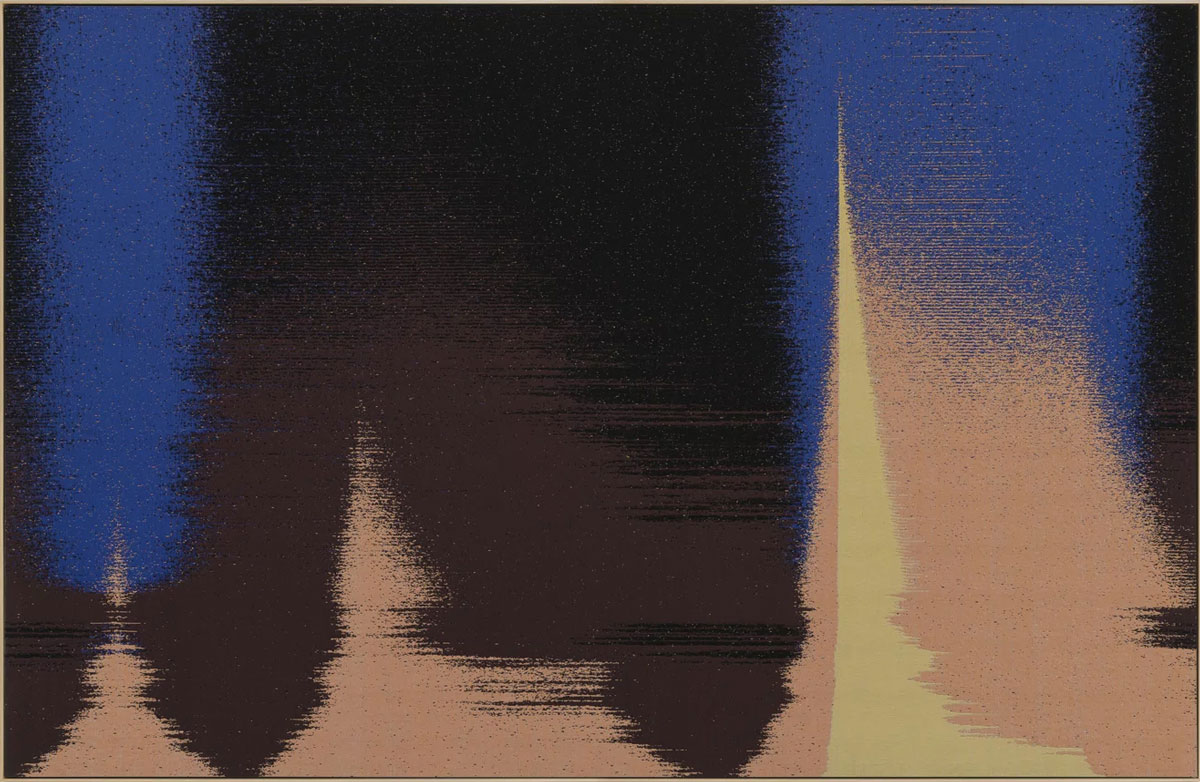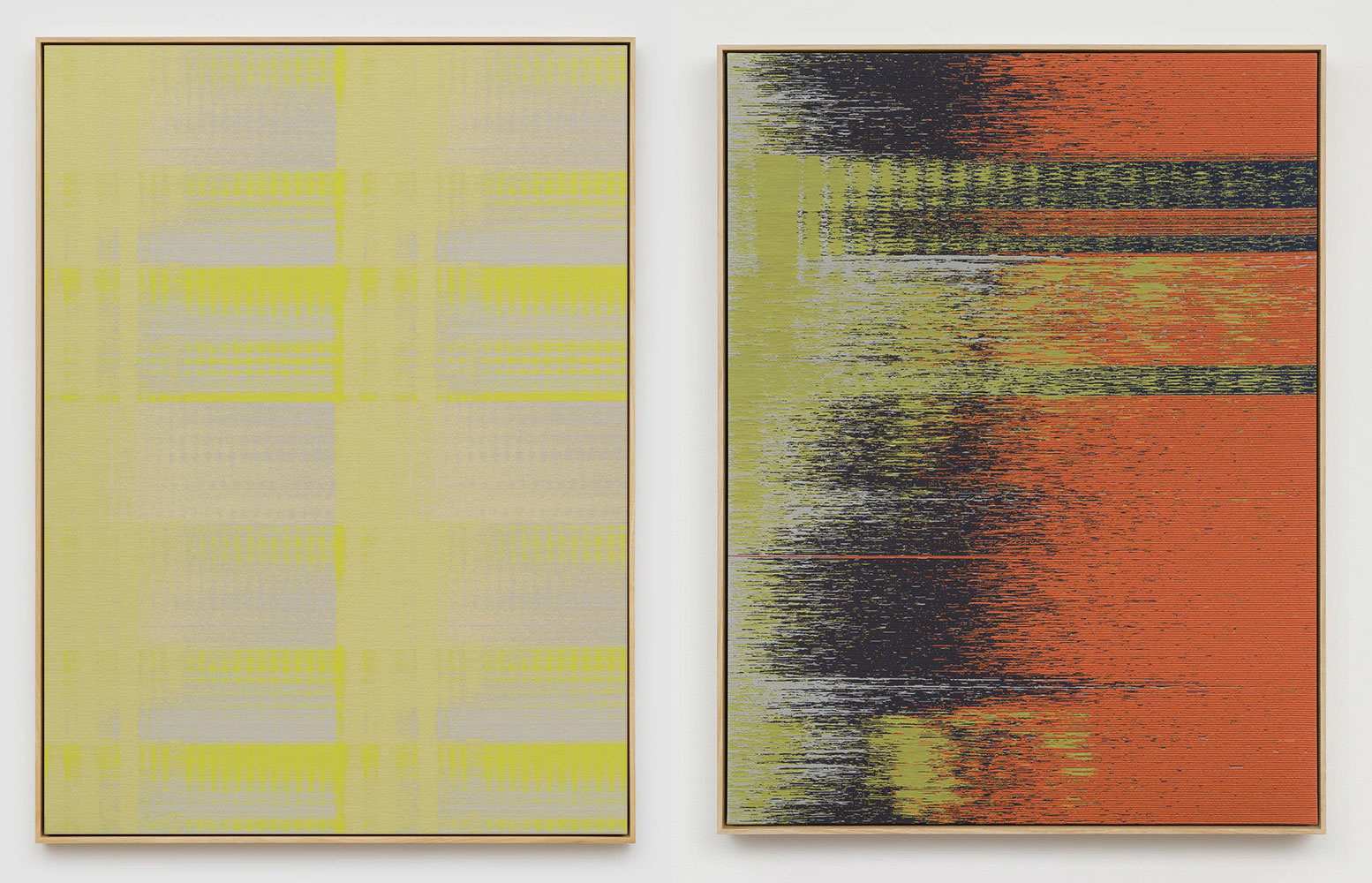ART CITIES: N.York-Mika Tajima
 In her sculptures, paintings, videos, and installations, Japanese-American artist Mika Tajima interrogates the techniques and technologies developed to shape and control the human body, its physicality, productivity, and imperceptible desires. From architectural systems to ergonomic design to psychographic data, her works operate in the space between the transient and the tangible, and highlight the complex networks of power and submission that we experience in relationship to our physical bodies and virtual selves.
In her sculptures, paintings, videos, and installations, Japanese-American artist Mika Tajima interrogates the techniques and technologies developed to shape and control the human body, its physicality, productivity, and imperceptible desires. From architectural systems to ergonomic design to psychographic data, her works operate in the space between the transient and the tangible, and highlight the complex networks of power and submission that we experience in relationship to our physical bodies and virtual selves.
By Efi Michalarou
Photo: Pace Gallery Archive
Mika Tajima I her solo exhibition “Energetics” brings together sculptural, textile, and evolving sensorial works. Drawing on various points of reference, including quantum mechanics, Hannah Arendt’s writings on the nature of freedom and Catherine Malabou’s notion of plasticity and the body as a vexed relation, the artist imbues her work across mediums with scientific and philosophical import. At the center of Tajima’s practice are her investigations of the ways that different digital and aesthetic technologies manifest as intertwined material, perceptual, and psychic experiences. Her exhibition takes its title from a segment of physics focused on flows and transformations of energy. Enactments of glowing, burning, blooming, and dying will recur across the gallery space, which, in Tajima’s hands, becomes a stage for spiritual and physical transfigurations, traversing digital and ancient temporalities. The acute shifts in the sizes of the works in the show—in relation to human scale—draw attention to our staggeringly infinitesimal existence in the context of geologic and technological time. With her new works, the artist invites questions of what it means to be an individual within this deep time continuum and, in this contemporary moment, amid the inexorable rise of big data. Upon entering the gallery, visitors l first experience a scent, which incorporates various ingredients used in ancient divination practices—emitted from a pyramidal incense sculpture in Tajima’s exhibition. Initiating viewers into the presentation, this ambient olfactory element serves to open the mind and to remind one of existence through the senses. Anchoring the show are new, large-scale textile paintings from the artist’s ongoing “Negative Entropy” series. For this body of work, the artist has worked with neurosurgeons specializing in repairing the brain through energetic stimulation and activation. Auditory maps of the brain’s activity are translated into visual representations of sound waves (spectrograms) to which Tajima assigns colors. The latest “Negative Entropy” compositions, which wereproduced in collaboration with an experimental textile lab in the Netherlands, are rendered at an entirely new, expansive scale. As such, these woven spectrograms, forged from virtually imperceptible records of brain activity, speak to the expansiveness of human potential. Tajima also present “Sense Object (January 1, 2023, United States)” as part of “Energetics”, a portrait of the national sentiment in the United States on January 1, 2023, compressed within a 5d memory crystal. To create this work, the artist collected data from social media on that day, analyzing the sentiments of text-based posts by American users. Made with optoelectronics technology, the massive amount of data is represented as 24 small squares within a cloud image and inscribed into a tiny disc-shaped optical crystal, which balances atop rose quartz. Captured and locked away forever, the data laser etched within the image of the cloud becomes a memorial of sorts, an ode to the abstract, intangible nature of our digital selves. Three rose quartz sculptures from Tajima’s Pranayama series, a body of work in which the artist has pierced wood or marble surfaces with bronze nozzles cast from real Jacuzzi jets, will be included in the exhibition as well. The locations of punctures in the stones are loosely based on diagrams of bodily pressure points for acupuncture treatment, a traditional wellness technique used to control and direct unknowable life force. With her new rose quartz Pranayama sculptures, Tajima taps into the material’s associations with new age beliefs and aesthetics as well as its ability to produce electrical reactions. Meditating on mysterious flows and releases of energy in bodies, objects, and spaces, these practices that expose interiority and systematize abstract life functions are analogous to technology’s imperative to understand, regulate, and shape human activity. New sculptural works that incorporate live flowers also explore these ideas of life energy and breath. Transfused with UV fluorescence, the flowers will glow in the exhibition, emitting light as they die. For Tajima, the ephemeral and performative dimensions of these works reflect the constantly fluctuating state of the natural, built, and digital worlds that we inhabit and create.
Photo: Mika Tajima, Negative Entropy (Deep Brain Stimulation, Siena, Full Width, Exa), 2024, cotton, polyester, nylon, and wood, 132-1/2″ × 205-1/2″ × 2″ (336.6 cm × 522 cm × 5.1 cm) 136-1/8″ × 208-7/16″ × 3-13/16″ (345.8 cm × 529.4 cm × 9.7 cm), framed, © Mika Tajima, Courtesy the artist and Pace Gallery
Info: Pace Gallery, 540 West 25th Street, New York, NY, USA, Duration: 12/1-24/2/2024, Days & Hours: Tue-Sat 10:00-18:00, https://www.pacegallery.com/

Right: Mika Tajima, Negative Entropy (TAE, Test Shot, Inner Divertor Operation, Norman, Orange, Single), 2023, cotton, polyester, nylon, wool acoustic baffling felt, and wood, 36″ × 27″ (91.4 cm × 68.6 cm) 36-7/8″ × 28-1/8″ × 2-3/8″ (93.7 cm × 71.4 cm × 6 cm), framed, © Mika Tajima, Courtesy the artist and Pace Gallery

![Mika Tajima, Sense Object, (January 1st, 2023, United States), 2024, 5D memory crystal encoded with sentiment data (24 hours' worth [2023/01/01] of Twitter data from United States), rose quartz, 40" × 24" × 24" (101.6 cm × 61 cm × 61 cm), overall, © Mika Tajima, Courtesy the artist and Pace Gallery](http://www.dreamideamachine.com/web/wp-content/uploads/2024/01/03-1.jpg)
